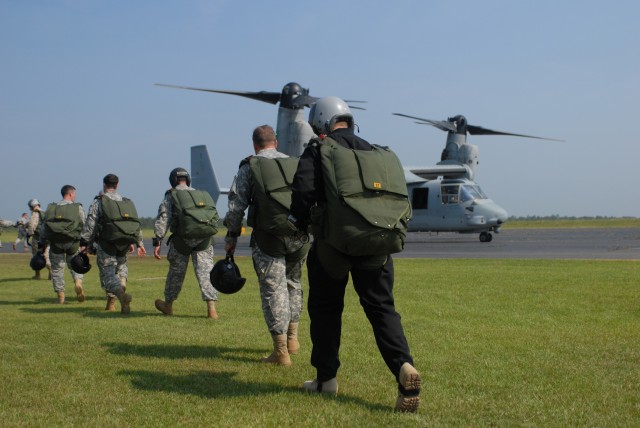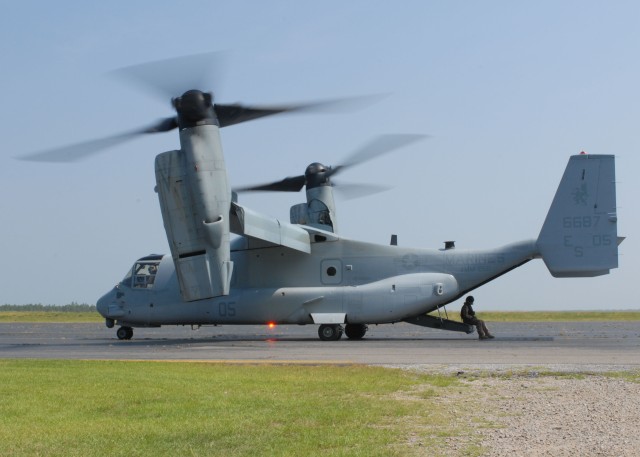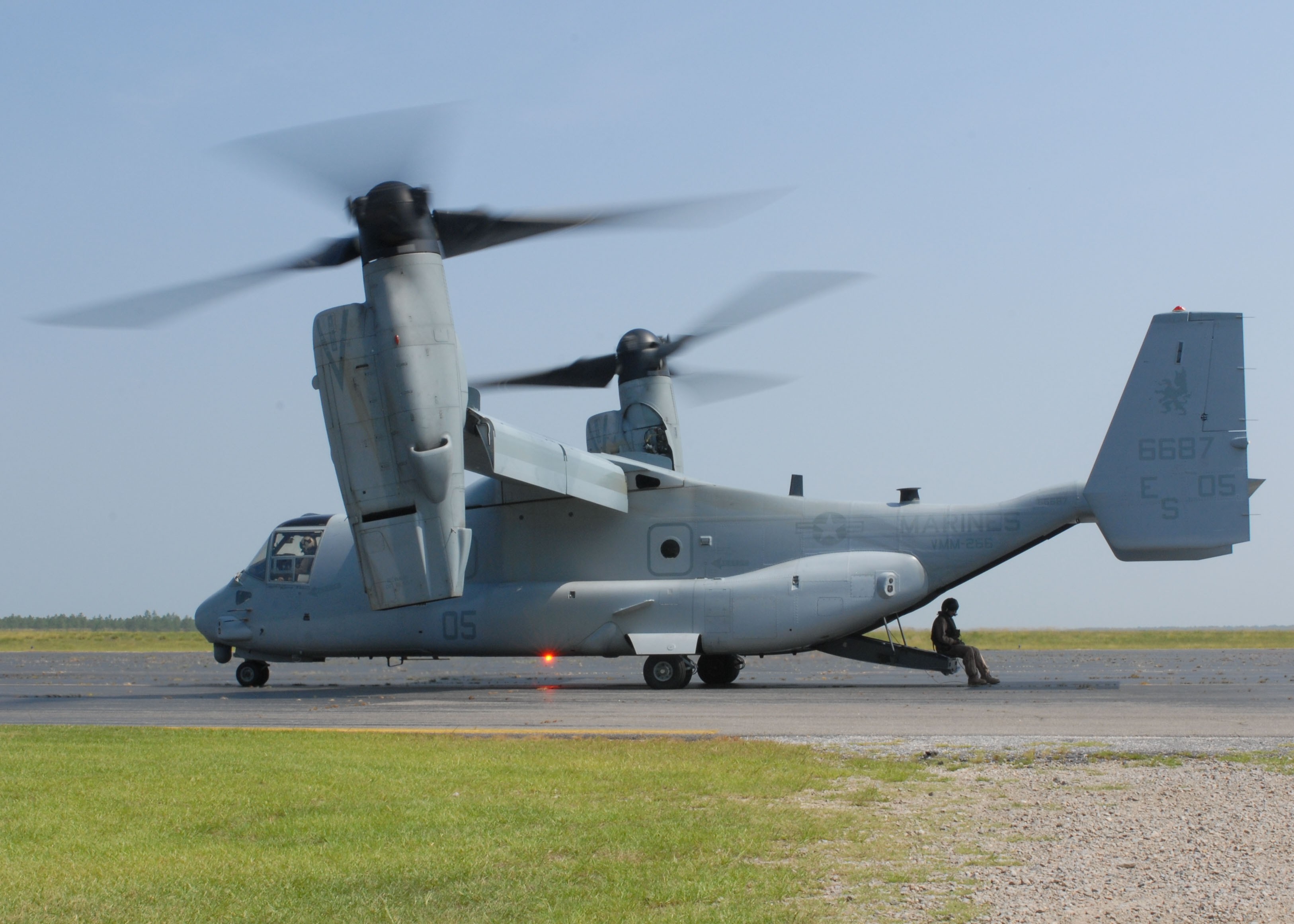CAMP MACKALL, N.C. -- On a cloudless summer day at Camp Mackall Airfield, the U.S. Army reached a new milestone in its airborne operations capabilities with the MV-22 Osprey aircraft July 22. The operation marked the first official use of the Osprey by the Army for training purposes, said Marine Lt. Col. Baron A. Harrison, Marine liaison at the U.S. Army John F. Kennedy Special Warfare Center and School at Fort Bragg, N.C. Until now, the Osprey had seen use by the U.S. Navy, Marines and Air Force, but not the Army. Because it is still a relatively new aircraft - the Osprey's first flight was in spring of 1989 - the Army had not shown a great deal of interest. However, this appears to be changing, said Maj. Steven B. Weliver, airborne commander for the operation. The mission came with two main objectives. The main focus was to validate free-fall procedures from the Osprey for Soldiers with the U.S. Army Special Operations Command, said Harrison. The secondary objective was to certify Army static-line jumpmasters on the Osprey. The highlight of the Osprey, and the key to what makes it particularly interesting to USASOC, is its tilt-rotor engine. This dynamic engine enables the Osprey to transition mid-flight from operating very much like a helicopter to propelling through the sky as though it were a plane. In addition to its ability to take off like a helicopter, the Osprey's top speed nearly doubles that of traditional rotary wing aircraft, such as the CH-47 Chinook. "It can get us farther, faster, so basically less exposure to any threats," Weliver said. The clear benefit is in extracting troops from a limited and confined space, said Staff Sgt. Eduardo F. Collado, secretary of the general staff at USASOC. But the Osprey was not always a proven method of travel. It was only recently that the evolution of the Osprey has earned the kind of credibility that catches the Army's interest, said Weliver. "The Osprey program has matured to a point where now we can start seeing what its capabilities are and how it will lend itself to the Special Operations community," he said. Even so, until a proper number of Soldiers are familiar with safety protocol while aboard the Osprey, it will remain only a potentially useful tool. This jump was among the first substantive steps in incorporating the Osprey into future Army operations.
USASOC greets Osprey
By Pfc. Benjamin Watson, 49th PAD (Abn.)August 5, 2008




Social Sharing